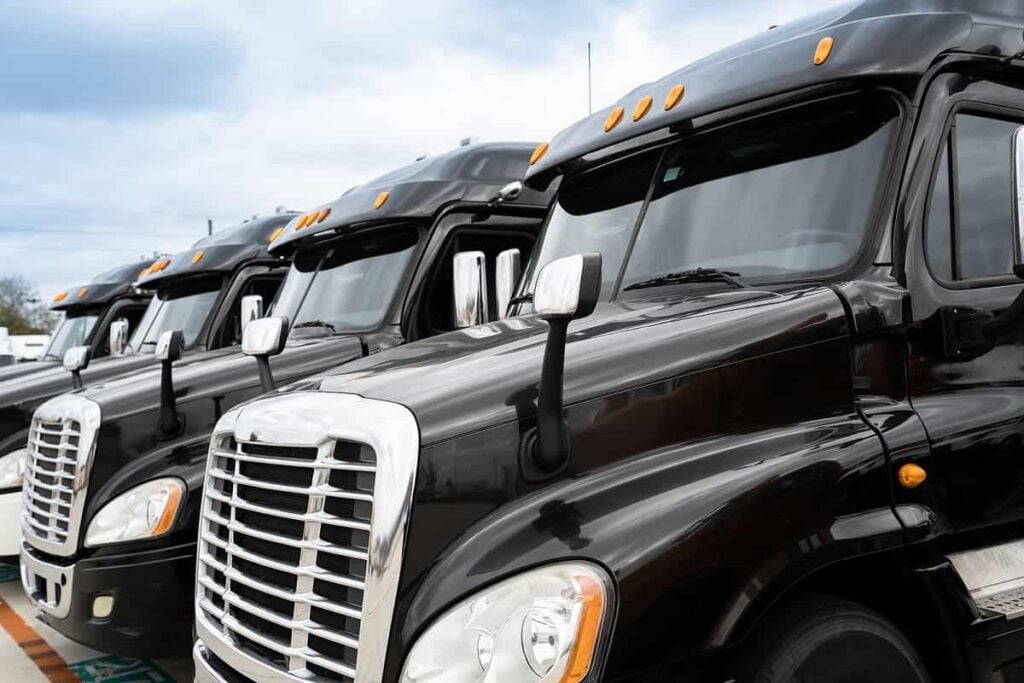What Are Airships and Will They Be Part of the Future?
Table of contents

Thomas Edison famously said, “Genius is 1% inspiration and 99% perspiration.” If we were to adapt this quote to the modern-day business climate, it might go something like this: “Success is 1% inspiration, 49% perspiration, and 50% promotion.” Hype is having its heyday, especially when it comes to emerging technologies. We just wrote about the disconnect with reality behind blank check companies and stock prices, but you can really apply this to almost any investment theme, public or private. Take transportation. Where are our flying cars, jetpacks, and autonomous vehicles? Sure, most of these technologies are in various stages of development, but how long have we read articles saying, “This is the year …” Now, suddenly airships are floating to the top of the list of new but old technologies to meet our future transportation needs.
What Are Airships?
First, let’s get something straight: The soft rock band Air Supply has nothing to do with airships. We were also disappointed to learn this. The term airship probably conjures up a couple of images for most of us. You may remember seeing Goodyear blimps fly over these things we once called sports stadiums where millionaires battled each other to the death in the glorious Pre-Pandemic Period. The other is the infamous Hindenburg disaster, which pretty much turned most people off of airships after this photo started making the rounds:

Airships originally referred to any sort of flying contraption, including some back-of-the-parchment designs that date to the 17th century. It wasn’t until the late 18th century that flying balloons got off the ground and somewhere around the mid-19th century we had the first airships that took on the classic blimp form. The golden age of airships got underway in the early 20th century with the launch of the first zeppelin airships made in Germany, ending in flames with the 1937 crash of the Hindenburg.
Today, airships refer to any powered, steerable aircraft that is inflated with a gas that is lighter than air. The gas of choice today is helium rather than the highly flammable hydrogen that ignited the infamous zeppelin. You may encounter the term dirigible, which is synonymous with airship. After that, the nomenclature breaks down into different categories based on the framework – rigid, semi-rigid, and non-rigid.

The last category is pretty much synonymous with blimps, where pressure from the gas within the envelope of the airship maintains its shape. A semi-rigid airship is sort of like a blimp but, as the name implies, there is at least a partial framework that provides structure. The latest generation of zeppelins, Zeppelin NT (New Technology), are semi-rigid. In fact, the current Goodyear blimps are not actually blimps but Zeppelin NTs, after the two companies renewed their partnership 70 years later after a little falling out called World War II. Rigid airships consist of an outer framework covered by an envelope. The original zeppelins were of this classification.
21st Century Business Case for Airships
It seems like only yesterday we were asking whether supersonic air travel would return. Now we’re wondering if airships will also make a comeback in the 21st century. They never entirely went away, of course, though the couple of dozen or so currently in use around the world are mostly floating billboards or offer local scenic flights to tourists. Aside from tourism, the main use case for a new generation of airships is to serve as transportation for people and cargo to remote locations where few roads or airstrips exist. Unlike the solutions for urban air mobility, which involves a network of drones and flying cars to serve the transportation needs of smart cities, airships are decidedly for serving rural and remote sites.
One of the key arguments in favor of airships is that they are much more environmentally friendly. Some have suggested we could replace air freight cargo planes with airships, which produce 80% to 90% fewer emissions than conventional aircraft (it’s why we considered airships green tech). The transport sector is reportedly responsible for around 25% of global CO2 emissions. While only about 3% currently come from cargo ships, this figure is expected to increase by between 50% and 250% until 2050.
A research paper published last year proposes that airships would be especially energy efficient because they could crisscross the world using the jet streams, reliably strong winds that flow from west to east, around five to eight miles above the Earth’s surface. These big-brained researchers also noted that these new airships could reliably transport hydrogen to help power another hyped-but-never-realized commercial technology – hydrogen fuel cells.
In the second half of the article, we introduce you to some of the companies developing and operating the next generation of airships.
Hybrid Airships for All Occasions
We generally seem to find at least one giant aerospace company lurking on the periphery whenever we write about these emerging transportation technologies. In this case, it’s Lockheed Martin (LMT) and its Skunk Works division, which is behind the company’s experimental aircraft programs.
The company has been at work on what it calls a hybrid airship for 20 years. About 10 years ago, Lockheed finally flew the technology demonstrator known as the P-791. That airship was designed with military applications in mind, loaded with cameras, infrared sensors, communications relays, and other payloads for reconnaissance missions. Unlike old-school dirigibles, the non-rigid hybrid airship from Lockheed Martin is heavier than air, with about 80% of the lift coming from buoyant helium and 20% from the hull aerodynamics and vectored thrust from the aircraft’s four rotatable engines. It uses hovercraft technology for its landing system, where blowers create atmospheric pressure differences that enable the airship to float above the surface.

The hull itself is made from a Kevlar-like fabric called Vectran. It features a robotic inspection technology, Self-Propelled Instrument for Damage Evaluation and Repair (SPIDER), which spots and fixes pinhole leaks while the hybrid airship is fully inflated. SPIDER consists of two magnetically attached halves, one that sits on the outside of the airship, while the other clings to it from the inside. The bivalve robot uses a set of bright LED lights and a camera to automatically spot pinhole leaks and then repositions itself to patch them.
A UK company called Straightline Aviation, with Sir Richard Branson apparently as its spokesperson, appears to be building its operation around the Lockheed Martin hybrid airship. Straightline has reportedly committed to buying the first dozen airships, which can carry at least a 20-ton payload, as well 12 to 19 passengers. The company has ambitious plans for its $480 million fleet of airships, with applications in everything from cargo and transportation to disaster relief and humanitarian missions to aerial surveillance and telecommunications.
Hybrid-Electric Airship
Another UK startup appears to be well-positioned in terms of SEO, if not financing: Hybrid Air Vehicles (HAV) has raised about $4.3 million from crowdfunding campaigns for its Airlander series of airships. The company says its technology “uses a combination of proven aerospace technologies from a mixture of airships (hull fabric and helium), fixed-wing aircraft (composite structures, engines, and avionics), and helicopters (vectored thrust).” Like Lockheed Martin’s P-791, HAV’s airship was originally developed for the military in collaboration with defense contractor Northrop Grumman (NOC).

The flagship model, Airlander 10, is reputedly the longest airship in the world at 320 feet, and can stay aloft for five days with a range of 4,000 miles. While the current model can reduce emissions by 75% compared to other aircraft, HAV is also working on a hybrid-electric model that reduces emissions by 90% and will be capable of carrying up to 90 passengers. A Swedish outfit called OceanSky Aviation plans to begin offering high-end Arctic expeditions aboard the Airlander 10 by the 2023-24 season under its OceanSky Cruises brand. Book your tickets now.
Heavy Lift Cargo Airships
Meanwhile, a French startup called Flying Whales hopes to be the first to launch a heavy lift rigid airship to transport cargo. Founded in 2012, Flying Whales has reportedly raised $246 million in funding to develop a 500-foot-long dirigible capable of handling 60 metric tons of cargo. The investors are mainly government-backed enterprises and funds from France and China, including China’s state-owned aviation company AVIC General, which owns about 25% of Flying Whales. The startup’s LCA60T model features a carbon fiber composite and hybrid propulsion system. It will deliver cargo either in an internal hold or via a sling load:

The company claims its closest competitors are large cargo helicopters, such as the Russian Mil Mi-26M that can lift 25 metric tons. The helicopter reportedly costs nearly $1 million a day to operate versus $50,000 for the LCA60T. The company also claims that it will build its first factory at a cost of about $100 million in the Bordeaux region by next year. It goes even further, saying it anticipates sales of more than $5.5 billion over 10 years from a fleet of 150 airships built in factories in France and China.

Meanwhile, a U.S.-based airship manufacturer, Worldwide Aeros Corp, is working on its own heavy-lift rigid airship, the Aeroscraft. Founded way back in 1987, Aeros originally developed the prototypes for the Aeroscraft thanks to tens of millions of dollars from the U.S. government. Most of the news around the company appears to be a few years old, so it’s unclear where Aeros is in the development and completion of the cargo airship.

The big differentiator is a technology that the company created to avoid the need for ballast called control of static heaviness (COSH). The main gas bag is inflated with helium to create lift for takeoff, then on landing some of the gas is re-compressed into a storage tank to partially deflate the gas bag and reduce lift.
Conclusion
As you can see there is a bit of hot air surrounding the future of airships. The industry is more famous for its failures (see Hindenburg and CargoLifter) than its successes. A big headwind certainly surrounds the future of the world’s supply of helium, a nonrenewable resource used in the superconductor technology behind things like MRI machines and quantum computers. The world may have about a century-worth of the element left, with about 40% located in the United States. The decision may come down to more clown balloons or giant airships.
Still, there appears to be some momentum behind the development of airships, with companies in both Canada and Russia also developing heavy-lift dirigibles. The race never ends to find newer and cheaper ways to extract resources from the most far-flung places in the world. Airships will fly if the economics make sense.
Sign up to our newsletter to get more of our great research delivered straight to your inbox!
Nanalyze Weekly includes useful insights written by our team of underpaid MBAs, research on new disruptive technology stocks flying under the radar, and summaries of our recent research. Always 100% free.



















I hope that in the next airship article, you include Buoyant Aircraft Systems International http://www.buoyantaircraft.ca
It would also be worthwhile to examine why it has been so difficult for a cargo airship to emerge. On this topic see: https://isopolar.com/airships-challenges-to-overcome/
Hi Barry,
Thank you for stopping by! Looks like you’re the founder of Buoyant and we appreciate the heads up. That’s a good article you sent over, thank you for that.
It’s always tough trying to find all the players out there and there will be oversights. We’re happy to add your firm to this article. Would you kindly drop us an email – [email protected] – with a paragraph on your firm? Similar to what you see in the above article for the other companies listed, any info you can provide on money raised, progress towards traction, backing, partnerships, technology, etc. is all very useful to understand your business.
Thank you!
Joe
Airships would help supply remote areas, helping to efficiently modernize developing nations. It would be nice to see them in practical uses, such as mail carriers initially.
Well, they’d need to compete against drones. There are already drone companies delivering medical supplies in the great country of Africa, and it seems like drone technology is probably going to be more nimble than a massive Hindenburg dropping letters out of the sky 🙂